Exploring Sikhism and Islam
Rare old painting of Guru Nanak in Baghdad Museum. Made in the 16th century by a Muslim painter from Baghdad Kamal ud din Behzad ( 1450-1535)
Introduction
I have a special affinity with the Punjab region,(Punj meaning five and Aab meaning water)
The land of five rivers is where my forefathers ( from my father’s side of the family) settled beside the river Ravi in Jalandhar .
Being Sufi Syeds from Nishapur in Iran they found peace and brotherhood within the green fields ,fertile plains and running rivers of the Punjab region .
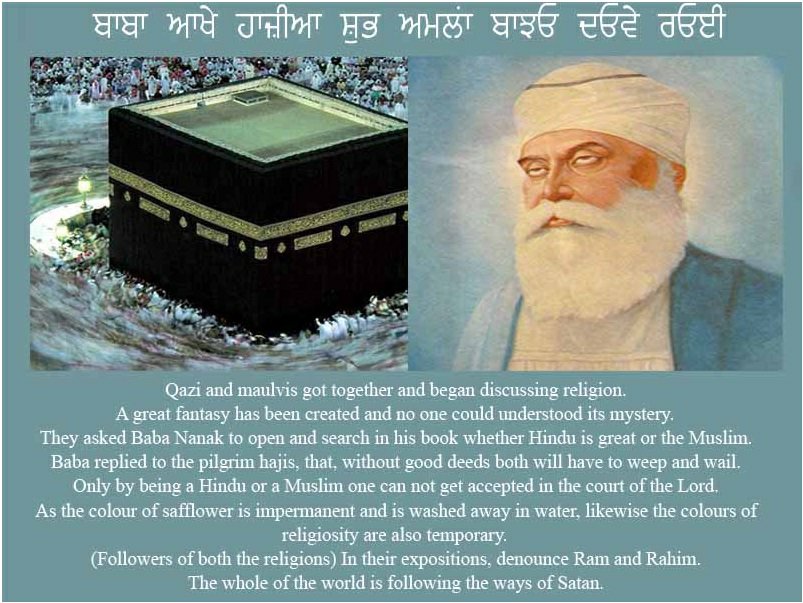
There is a history of constructive influence between Islam and Sikhism and while going through the passages of history we realise that the conflict between the Sikh Gurus and Mughal Emperor’s were mainly because of political reasons, it had nothing to do with either of the two religions .
In fact in the early stages of Sikhism, the Guru’s had much closer links with the Sufi saints of their times.
Guru Granth Sahib
The text of Shri Guru Granth Sahib or Adi Granth (the holy scripture in Sikhism)was compiled in 1604.
It includes the teachings of 36 contributors who lived, preached and practiced spiritualism over 5 centuries.
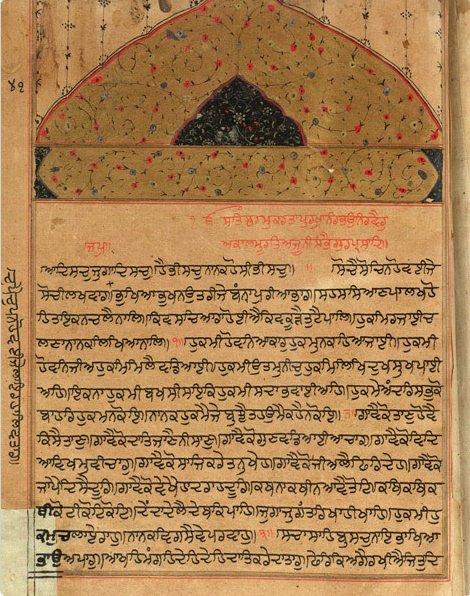
Photo credit : British Museum
This folio of Guru Granth Sahib dates from middle of the 17th century (1660-75) and is therefore one the 20 oldest known copies in existence.
Guru Granth Sahib or the Adi Granth Sahib contains tradition and teachings of 14 Hindu Bhakti movement sants ( saints),such as Kabir, Namdev etc ,1 Muslim Baba Farid and 2 other Untouchables .
Their profound love for One Almighty God, preaching oneness of mankind found their place in the holy scripture.
Baba Farid Ganjshakar
Khwaja Farid ud- din Masud Ganjshakar was a Sufi of the Chishti Order.
He is considered as the first major poet of the Punjabi language and a selection of his Kalam (work) around 132 hymns are included in the most Sacred Scripture of Sikhism the Guru Granth Sahib.
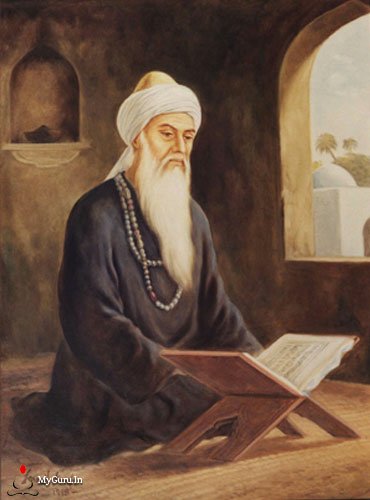
There are 10 Sikh Gurus and 15 Bhagats in Sikhism, and Baba Farid is counted as one of equally revered 15 Bhagats in Sikhism.
Baba Farid lies buried in Pakpattan, Punjab province of present day Pakistan .
His revered shrine is closed from 5th Moharram till 40th Muharram and is covered in a black cloth honouring the Martyrs of Karbala , and in Baba Farid’s own words that he ,“leaves for Karbala to seek alms from his master Imam Hussain a. s.”
Oness of God
Islam believes in the Oneness of God and so does the teachings of Guru Nanak also preach in one true God, Ek Omkar .
Both Islam and Sikhism are Monotheistic religion.
Islamic phrase
Mirror image calligraphy of Bismillah
Photo credit:Wikipedia
Bismillah- hir -rehman- nir- raheem means, In the name of God, the Most Gracious, the Most Merciful.
It is an Islamic phrase that appears 113 times in the holy Quran and forms the opening lines of each Chapter (Surah) except for the ninth chapter.
Mool Mantra
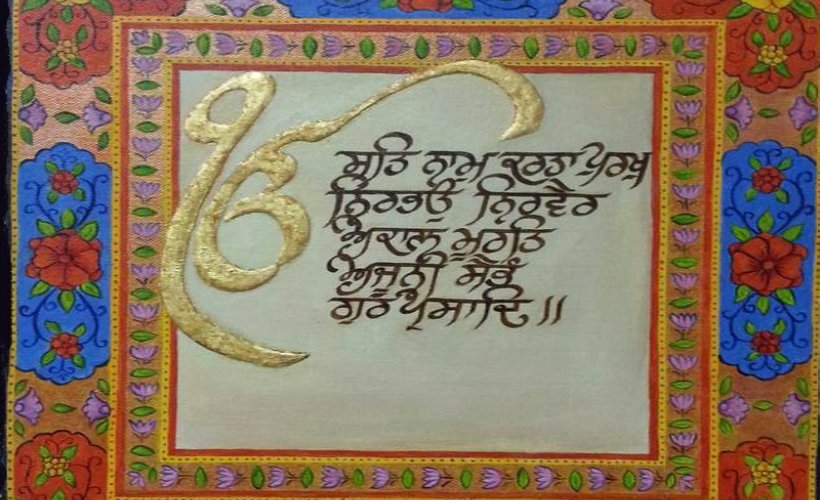
Photo credit: Sikhnet. com
The preamble of the Sikh holy scripture is the Mool mantra.
It comes in abbreviated form,smallest form ,”Ik Omkar Satgur prasad ”,it comes 525 times before the beginning of Chapters and Ragas.”
Professor Nashir Naqvi ,(Punjab University and an authority on Punjab History) rightly points out that both the Sacred scriptures emphasize on the the Oneness of God or Hamdiya Kalam.
Scripts
Punjabi language has two major scripts (1) ShahMukhi (2) Gurmukhi script.
ShahMukhi Script
ShahMukhi literally meaning from the King’s mouth is a variant of Urdu script, based on Nastaliq style of the ancient Persian script.
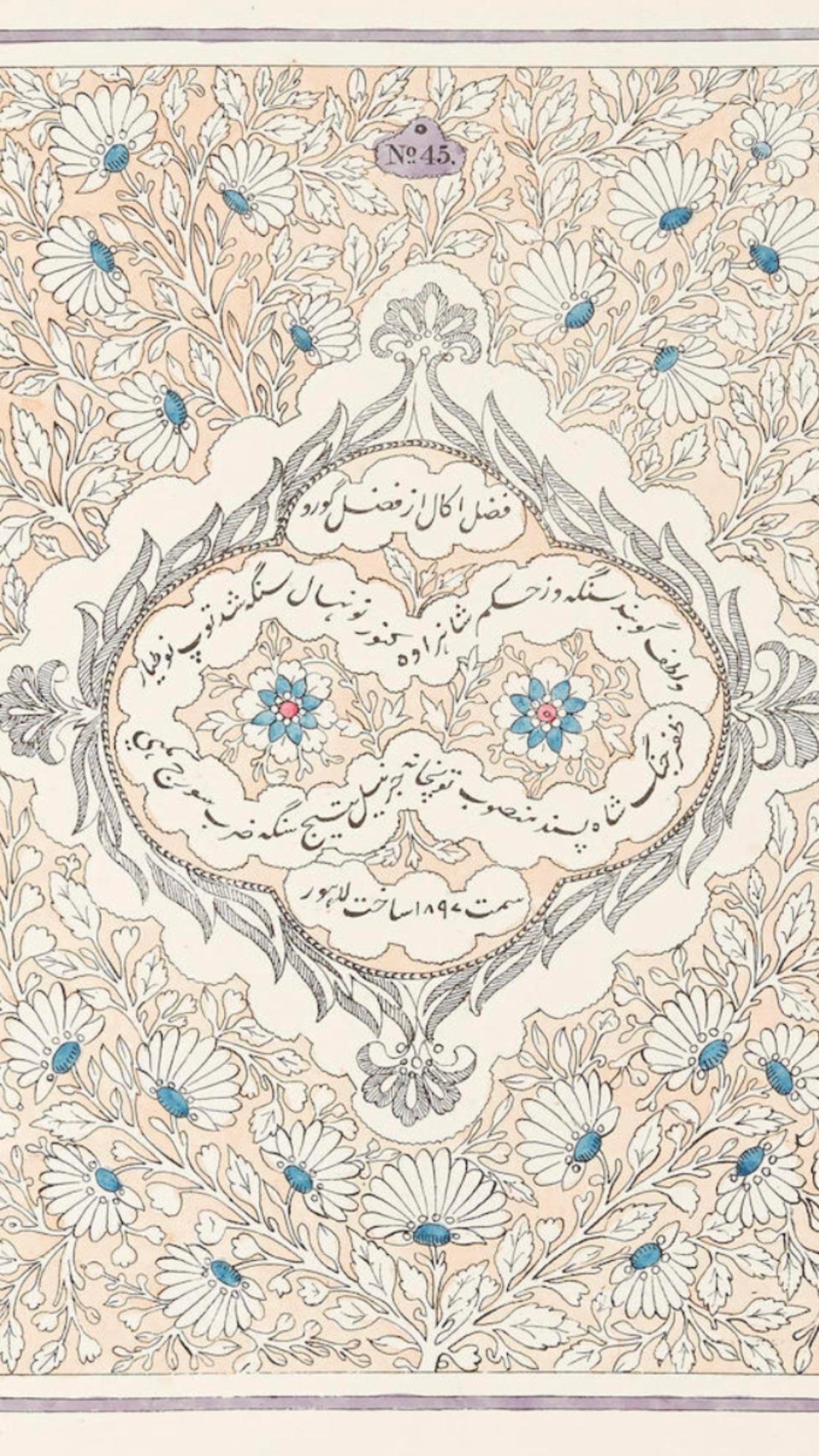
Photo credit : Reddit
Printed in Lahore in 1897
ShahMukhi was adopted by Sufi poets of Punjab as early as 11th century and over a period of time it became a standard writing style for Punjabi language.
ShahMukhi is based on Arabic script and uses words from Urdu,Arabic and Persian language and is written from Right to Left.
Gurmukhi Script
Gurmukhi literally means from the Guru’s mouth, is a relatively new script when compared to ShahMukhi.
It was adopted by the 2nd Sikh Guru, Guru Angad (1563-1606) in the 16th century.
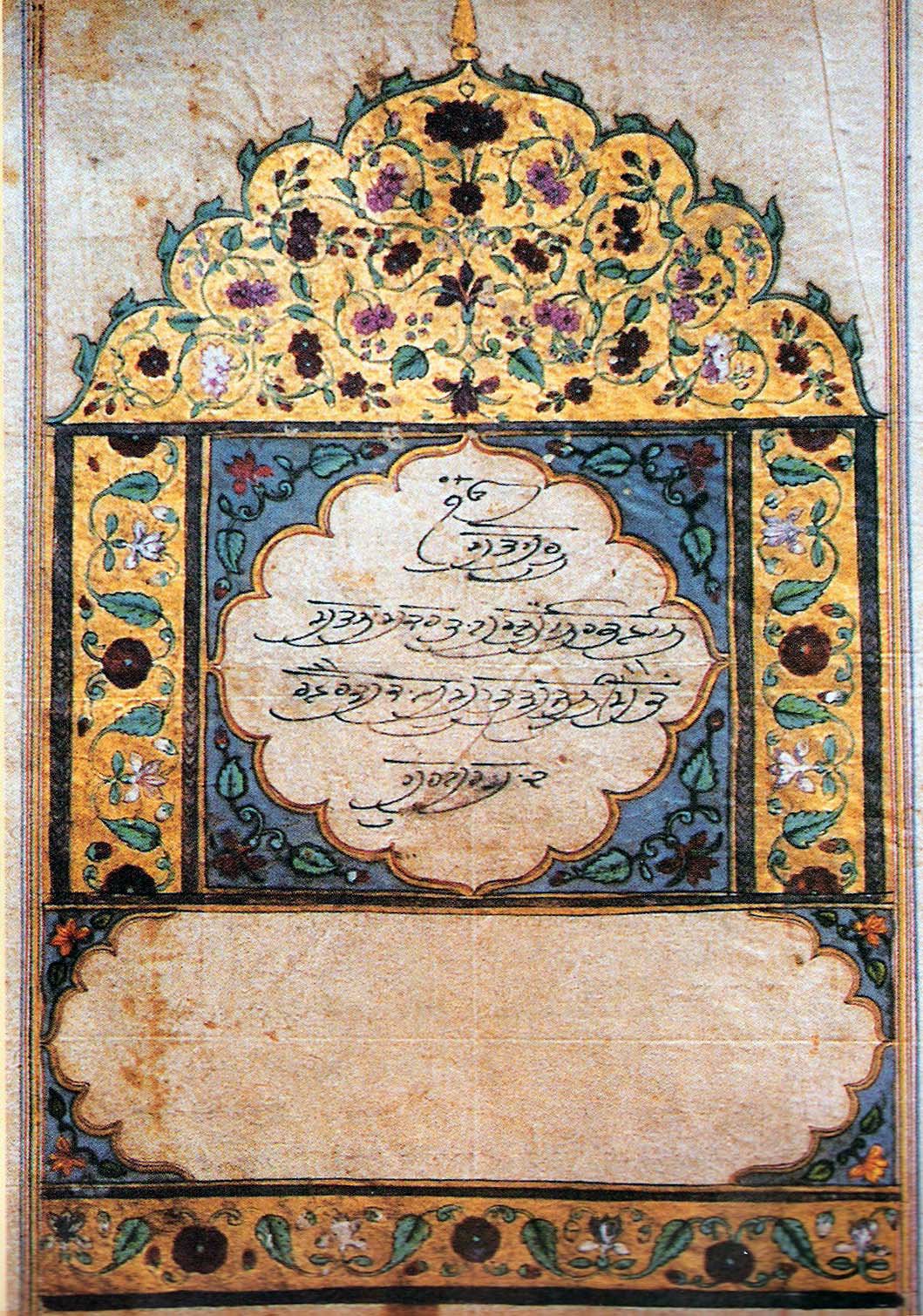
GurMukhi script is based on Devnagri script, using Hindi and Sanskrit words, it is written from Left to Right.
Both ShahMukhi and GurMukhi scripts are found in Punjab region, but since the middle of the 20th century , ShahMukhi has been mainly used in the Punjab region of Pakistan .
Hazrat Baba Sain Mir Mohammad Sahib ( 1550-1635 )
For keeping the Holy Scripture (Guru Granth Sahib) Guru Arjan Dev ji built a temple in 1588 in the middle of the holy tank named Amritsar or (pool of nectar) and named it Hari Mandir. Mandir is a sacred structure and Hari is a qualitative name of God.
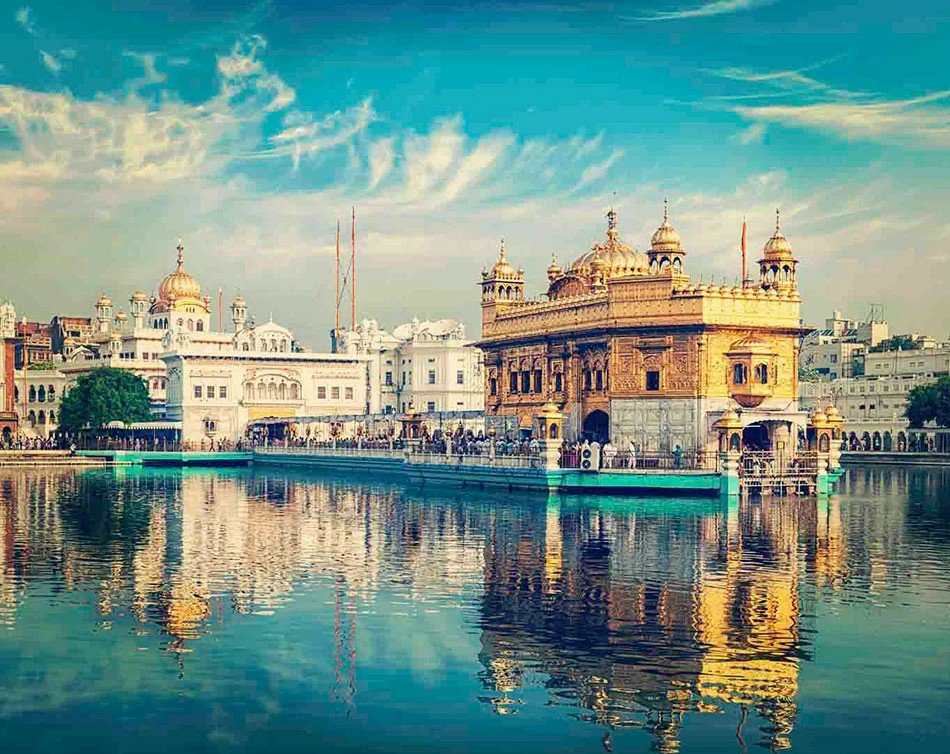
It is the holiest shrine of the Sikh religion and is located in the Indian city of Amritsar( Punjab).
Foundation stone at Harmandir Sahib
Since the temple was to be thrown open to people of all caste, creed and religion,Guru Arjan Dev ji invited Hazrat Baba Sain Mir Mohammad Sahib ( 1550-1635) also known as Mian Mir,who was a famous Muslim Sufi saint belonging to the Qadiri order of Sufism ,to lay down the foundation stone of Harmandir Sahib or Golden Temple at Amritsar.
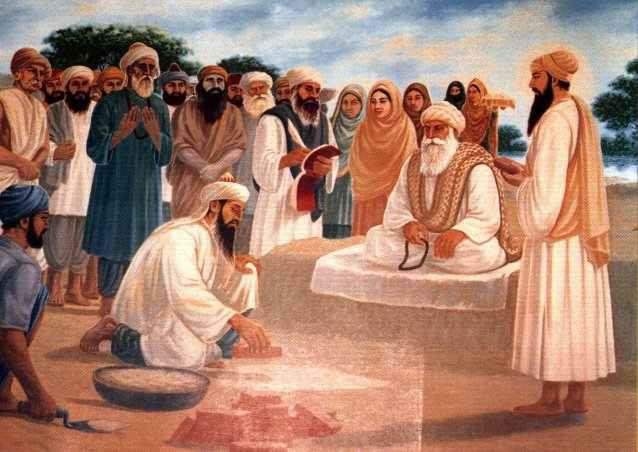
Mian Mir travelled from Lahore to Amritsar, to lay the foundation stone of Harmandir Sahib in Amritsar.This is also the foundation stone of Sikh Muslim relations.
The foundation strengthened the love, respect and brotherhood between the Sikhs and Muslims, especially the Sufis who believed in the Oneness of God and mankind.
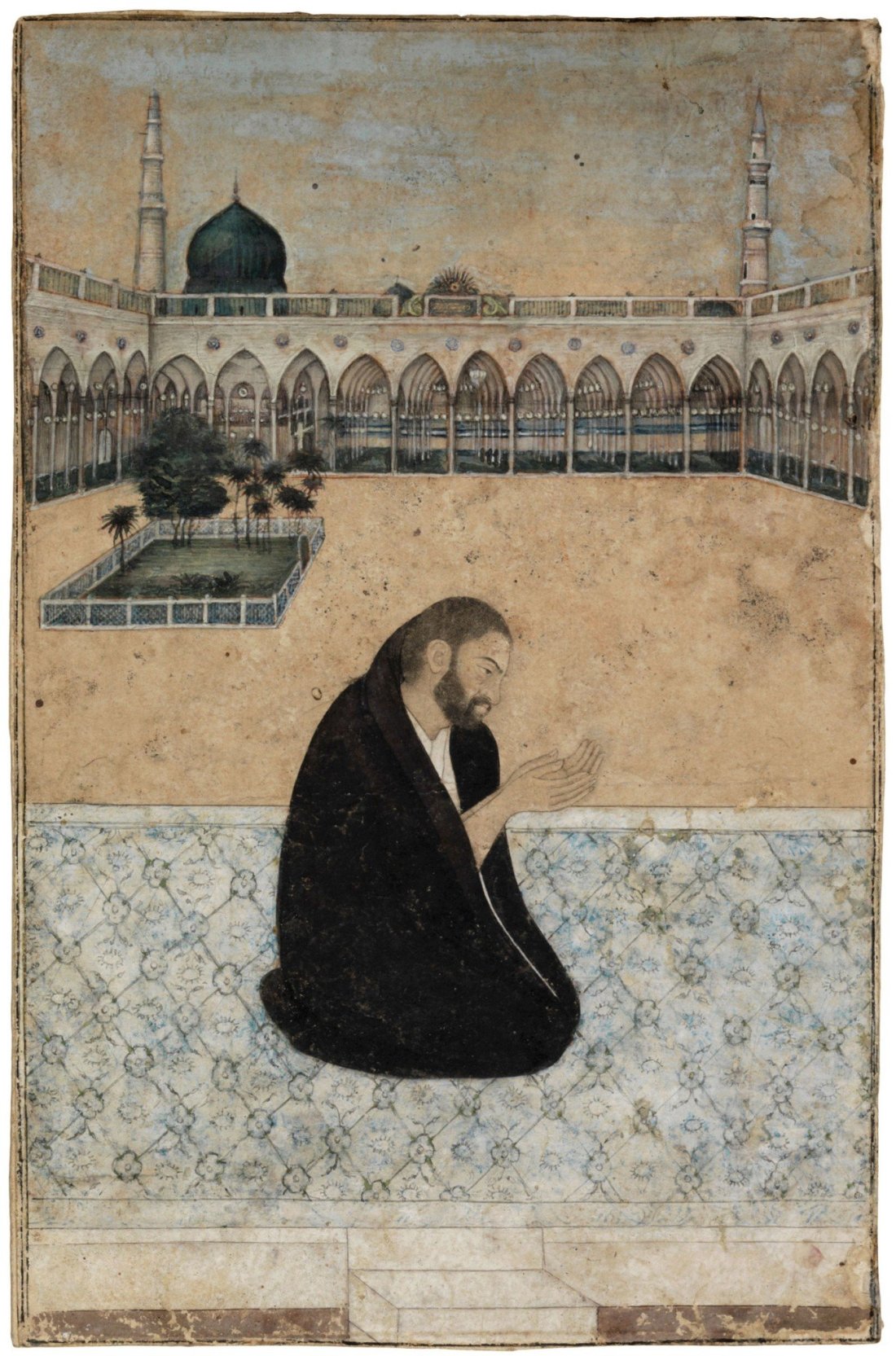
Photo credit : Khalili Collection. Mian Mir praying in the holy city of Medina.
Relationship with the Mughals
Mian Mir was an icon of unity, tolerance and love during his life and is still highly respected by the Sikhs.
He was against the in -human torture Guru Arjan Dev ji(5th Guru) had to endure especially under the reign of Mughal Emperor Jahangir and gave his blessings to his young 13 year old Guru Hargobind ji (6th Guru)after the untimely death of his father Guru Arjan Dev ji.
It was through his intervention and other well wishers that Emperor Jahangir reconciled his relationship with the Sikh Gurus.

Mian Mir lies buried in Lahore, and his shrine still attracts a large number of people of all religions, castes and creeds .
Dara Shikoh
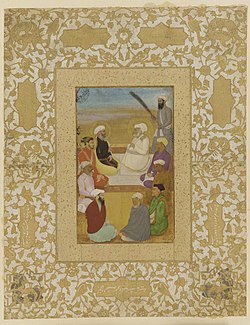
Photo credit : Wikipedia
Mughal style painting showing Dara Shikoh with Mian Mir and Mullah Shah Badakshi
Prince Dara Shikoh (the eldest son of Mughal Emperor ShahJahan) was a famous disciple of Mian Mir and often sought his company.
His book Sakinatul Aulia is dedicated to the life and works of Mian Mir.
My link with the Revered Saint.
My late father, Syed Mushtaq Hussain Naqvi took great pride in the fact that he belonged to the branch of Mian Mir’s lineage.
He has written extensively about this in his book Mir Wajid Ali ( biography)
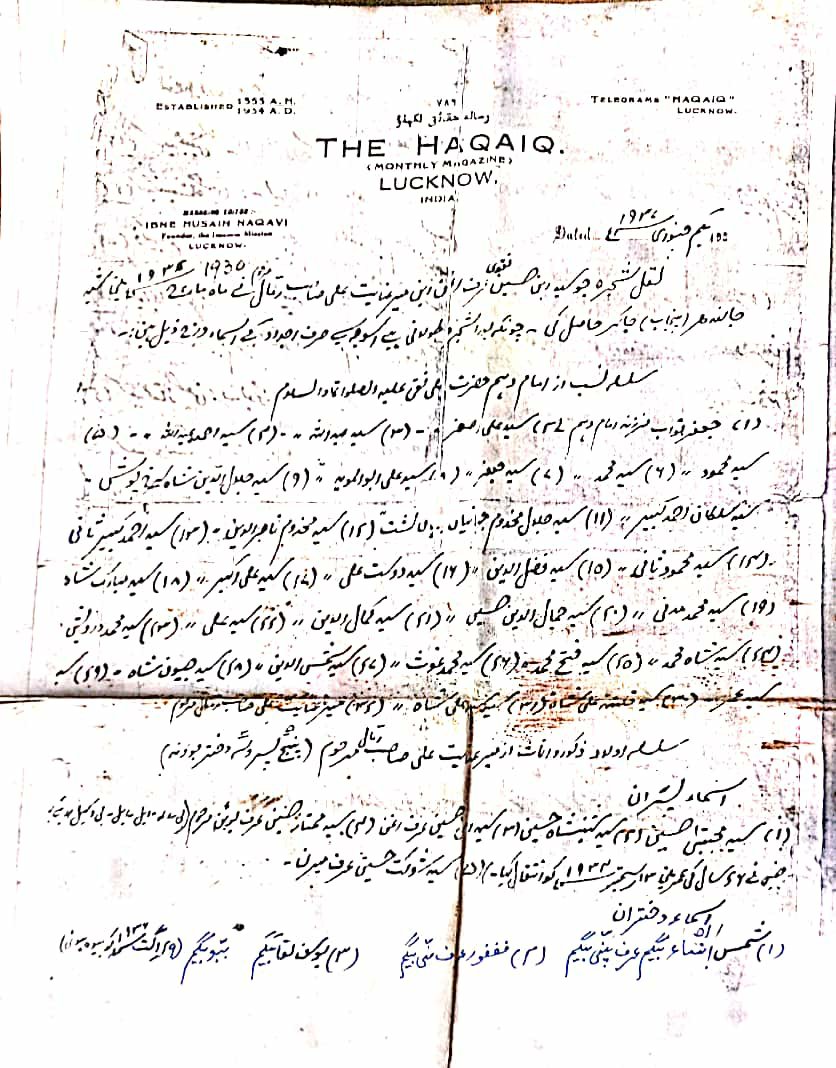
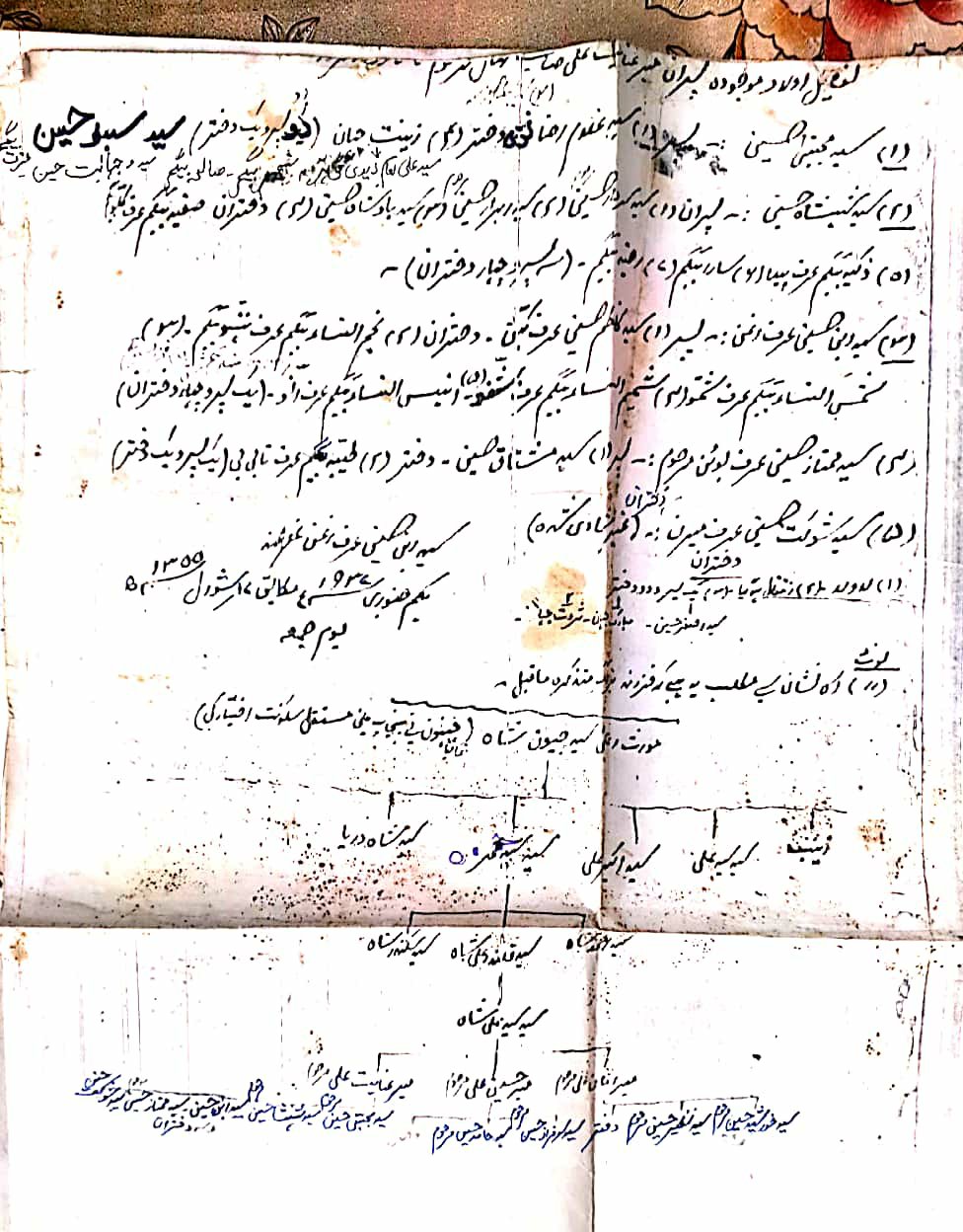
Photo credit : Dr. Syed Ali Imam Zaidi, ‘Gauhar Lucknawi ’.(Mir Anees was his great -grandfather from maternal side and my father’s nephew).
Family tree of my late father Syed Mushtaq Hussain Naqvi.
He often told me, “beta mere paas duniya ki daulat nahi hai par mein tumko apna shajra aur kitabein de sakta hoon, joe bahut qeemat rakhti hein”. it translates as, “my child though I haven’t had worldly possessions with me, all I can give to you are my books and my lineage, they are much more priceless. ”
Travels of Guru Nanak
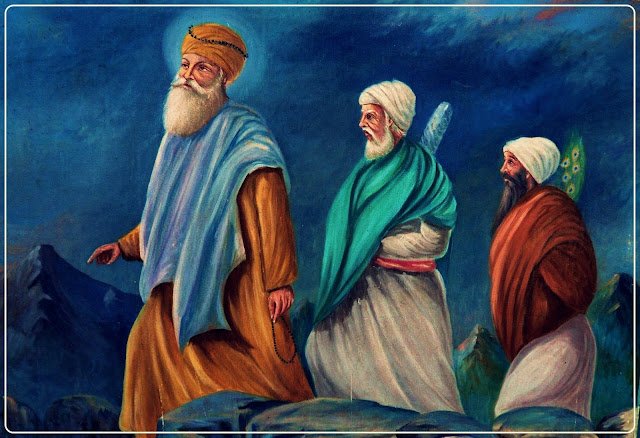
To spread the,’real message of God’,Shri Guru Nanak Dev ji travelled in all four (4) directions.It is believed that he travelled more than 24,000 kms.
Most of his journey were made on foot across different countries and around 60 cities with his trusted companion Bhai Mardana spanning 24 years.
Udasis ( Journey)
These travels are called Udasis. The word Udasi is derived from the Sanskrit word Udasin meaning detached, journey, reflecting an approach to spiritual and temporal life.
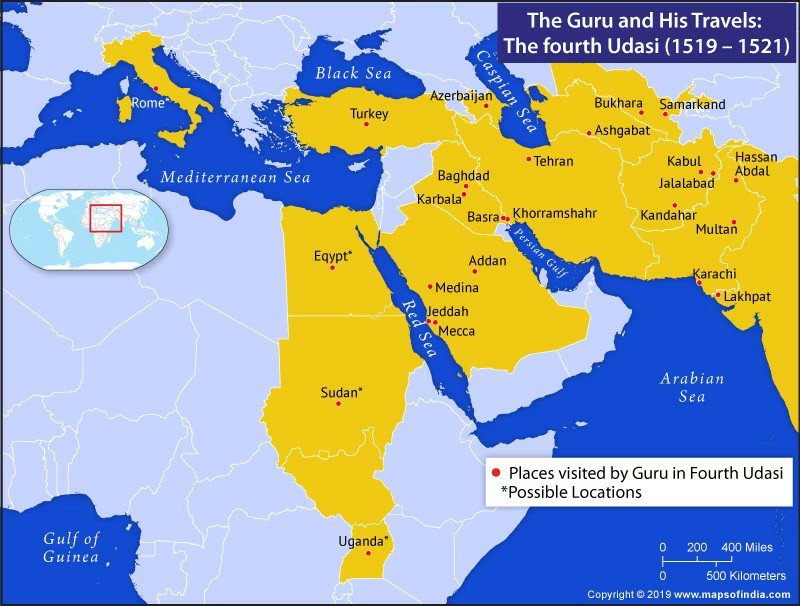
At the age of 50,Guru Nanak ji set off for his 4th and last Udasi spanning almost 3 years to different lands of West Asia,covering different countries,cities and various places along the way.
He also visited the Muslim holy cities of Mecca, Medina, Karbala, Najaf and their shrines.
Travelogues
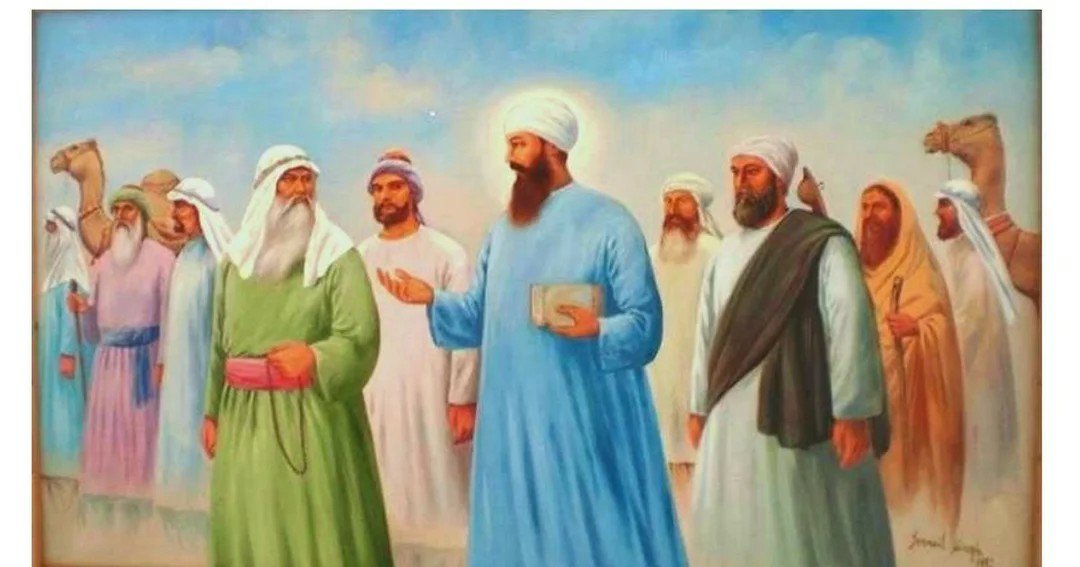
In Mecca Guru Nanak ji met with Haji Rukn- ud -din and Haji Taaj -ud -din Nakshbandi, ( a historian and writer from Iran).
Both Rukn -ud -din and Taj -ud-din Naqshbandi have recorded their meetings and travels with Guru Nanak ji in Mecca.
Taj-ud -din Naqshbandi maintained a diary named Siyahto Baba Nanak Fakir, while Khwaja Zainul Abdin wrote Twarik -i-Arab about the travels of Guru Nanak ji in Mecca.
Baghdad
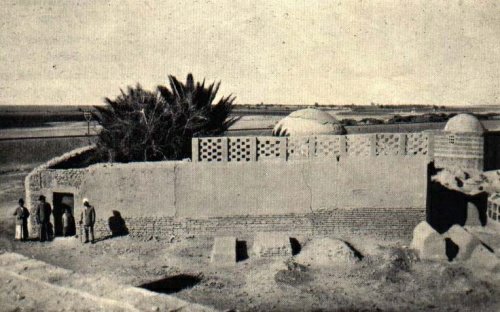
Photo credit : Wikipedia
Gurudwara at Baghdad ( Iraq) 1920’s
In Baghdad ,according to historical sources Bhai Mardana and Guru Nanak stayed with Sheikh Bahlol Dana ( a renowned Sufi mystic of his time).
The place where they stayed together is converted into a humble looking shrine or ( Gurudwara) and maintained by Abu Yusuf who was the caretaker till mid 1990’s
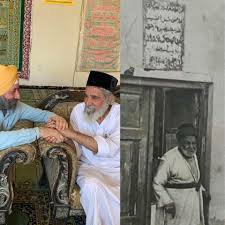
Photo credit: Mr. Amardeep Singh (The Guru Nanak),Facebook
Left, Abu Yusuf (caretaker) Right, his grand father.
Even today there are several disciples of Guru Nanak living in Iraq on the Western banks of the river Tigris, particularly in the cities of Al -Kut and Baghdad.
They are called Sobi and are generally goldsmiths.They remember Guru Nanak with great reverence and call him by the name Baba Nanak .
Robes of Honour
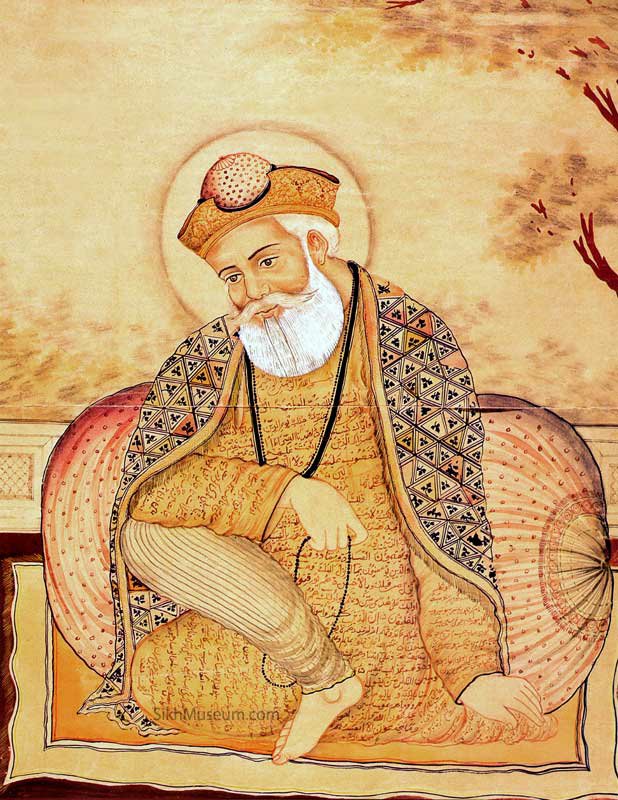
Photo credit : Pinterest
19th century painting with fine calligraphy preserved in the Government Museum and Art Gallery, Chandigarh
A Choga is a smock or gown worn by Muslim holy saints or Pirs.
The Choga was presented to Guru Nanak by Muslim rulers during his travels to the Middle East.
It is recorded in Sikh sources that Guru Nanak took off his robe at Kartarpur and presented it to Guru Angad.
This robe has been given to the five (5) Gurus while bestowing Guruship.Themanagement and the upkeep of the Choga or ‘Chola Sahib’ has since been given to Guru Nanak’s descendants.
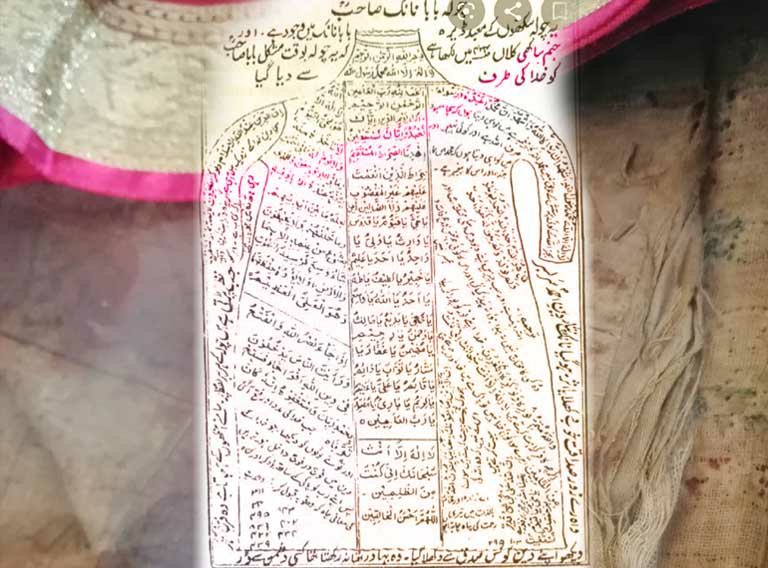
Photo credit: the world Sikh news. com
It is on display and preserved in Gurudwara Dera Baba Nanak (Pakistan) .
A living testimony of Guru Sahib’s successful voyage to the Middle East
Decoding the Chola Sahib
Robe of Honour (Chola Sahib) that the Guru wears in the painting is illustrated with calligraphy in the Arabic Nakshi script with verses of the Quran.
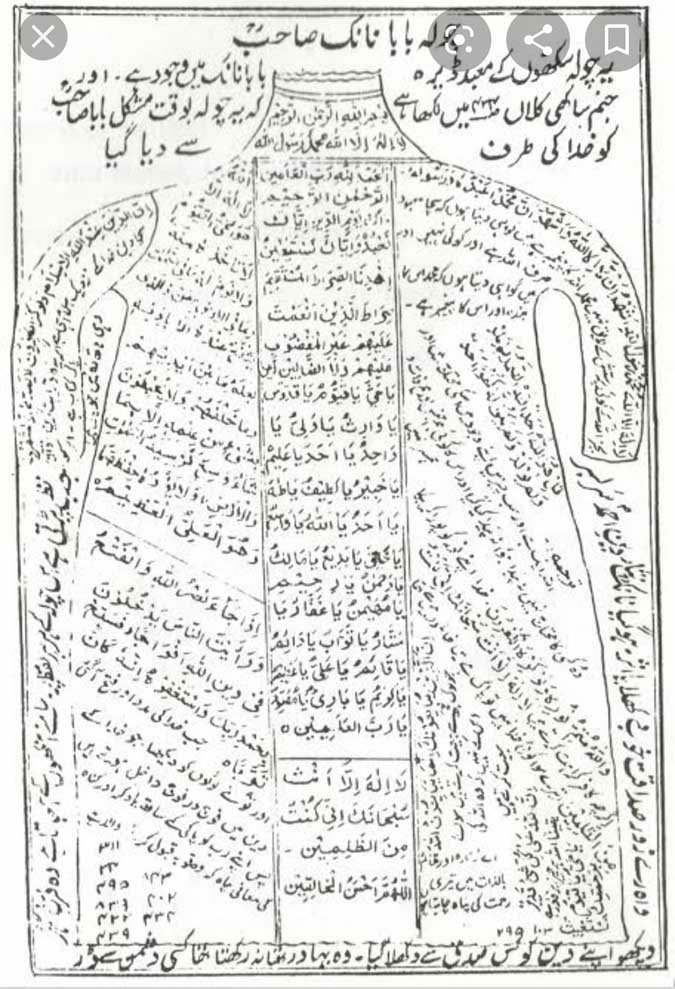
Inside the choga are many round shaped circles in which numbers of many languages are written like Sanskrit, Arabic, Persian and Urdu numerals.
Bhai Mardana
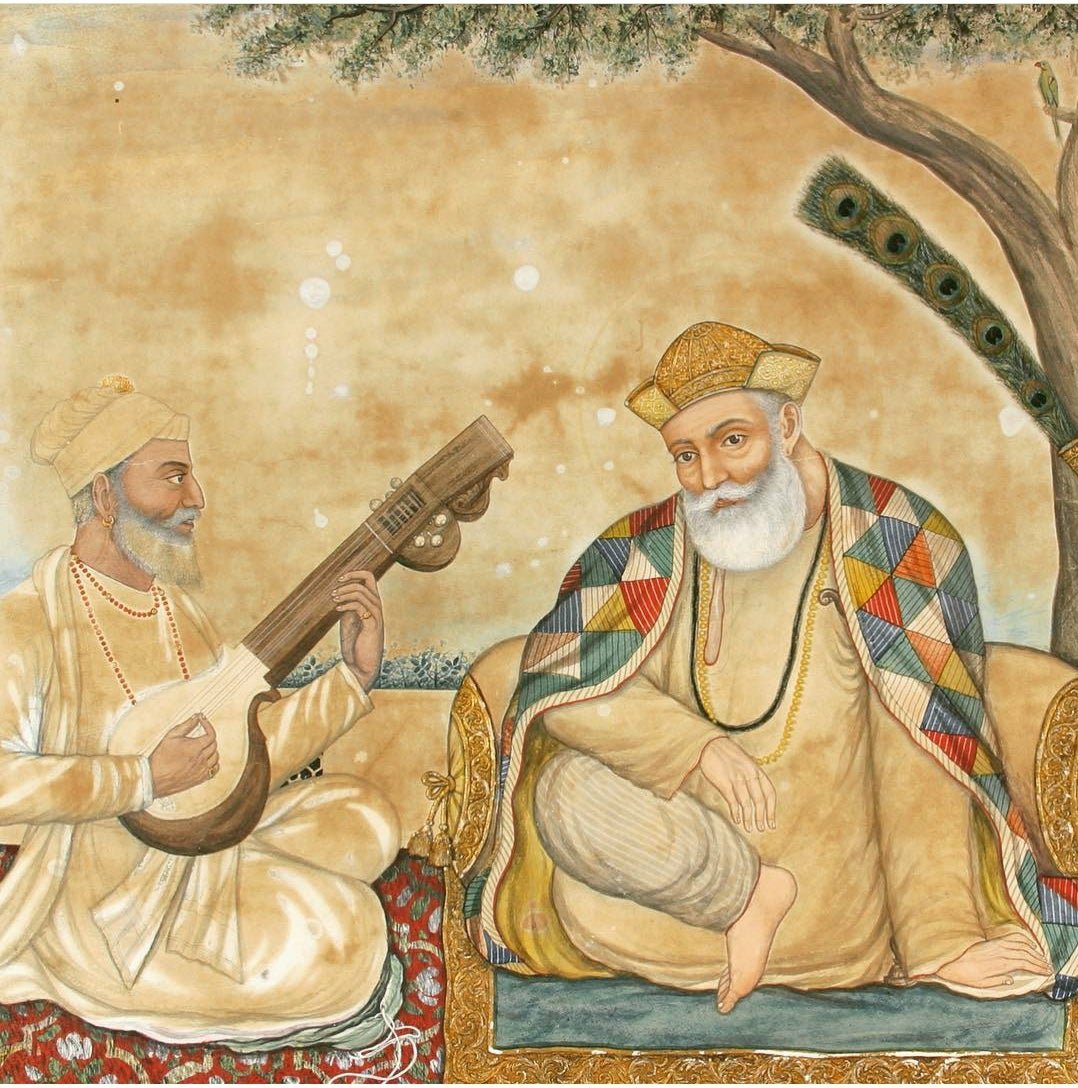
Accompanying Guru Nanak in all of his journeys was Bhai Mardana, a childhood friend and a Muslim, who belonged to a family of Mirasi.
Bhai Mardana would play the Rabab ( musical instrument) , adding to the mystic of Guru Nanak’s divine Shabads( hymns).
Through his Shabads, Guru Nanak spread the message of Ik Onkar Or One true God.
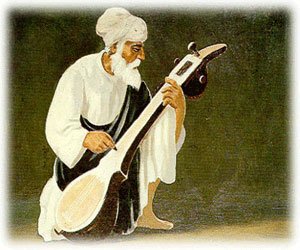
Qawwali and Kirtan are practically of the same tradition.
Samana ( Patiala)
The small town of Samana is located 28 kms from Patiala district in the Indian State of Punjab.
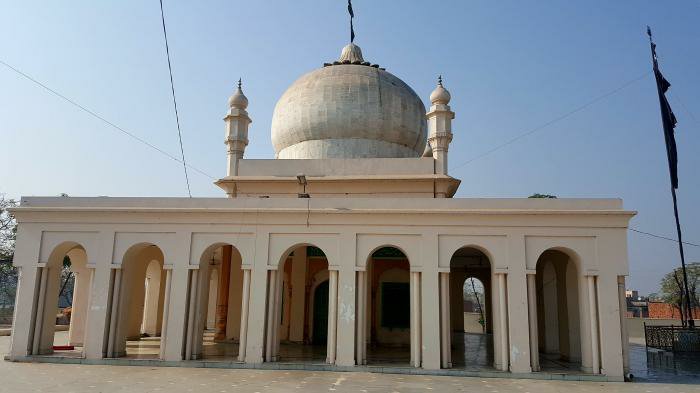
History of Samana begins with the migration of Imamzadeh Syed Mashadd Ali ibn Imam Ali Reza a.s along with his family and followers from Iran because of political tensions with then Abbasid Caliph Mamun Rashid.
Samana was named after the wife of Imam Ali al Ridha ( Eight Imam of Shia Islam)
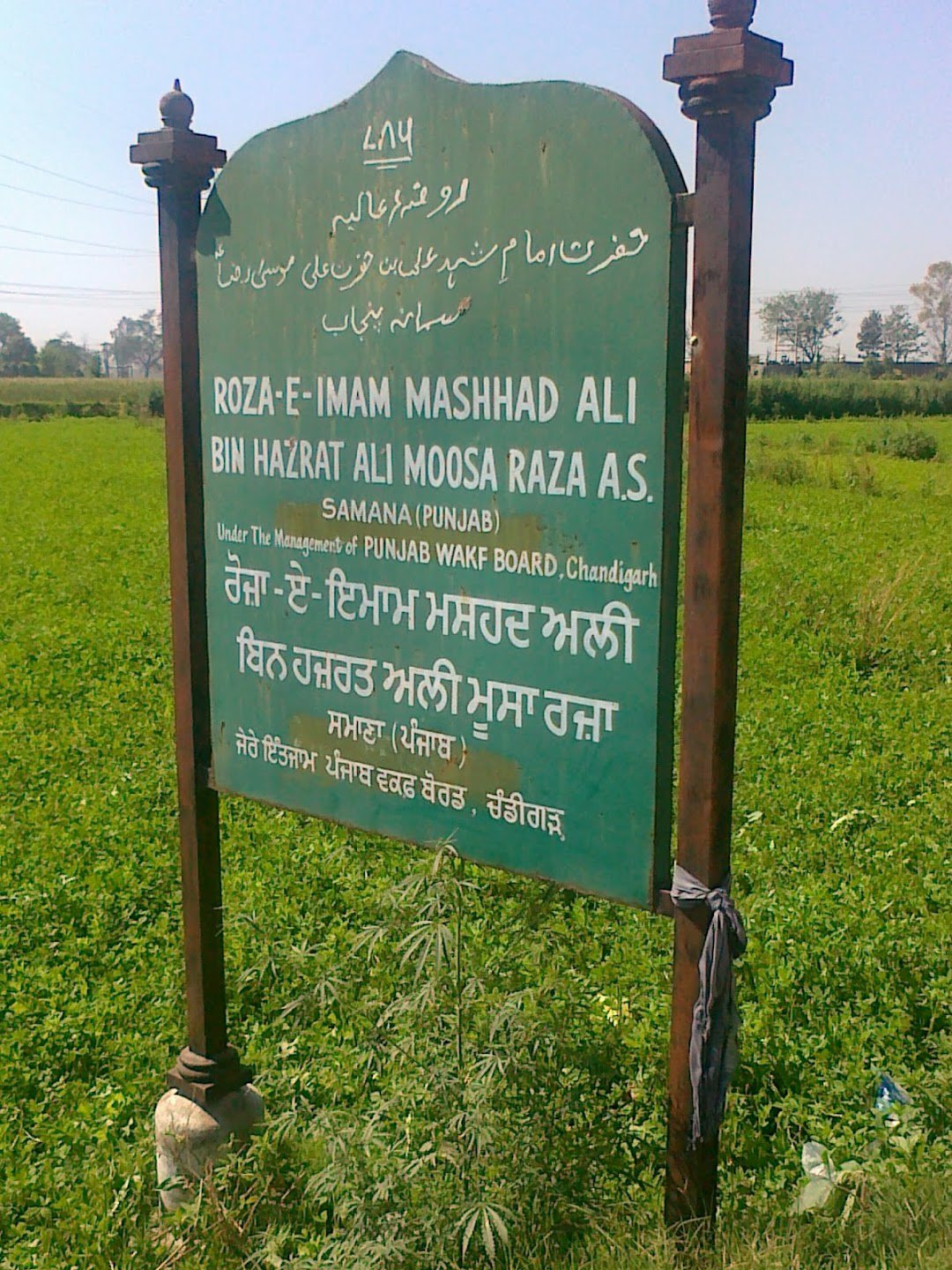
The holy shrine is at least 1250 years old, locally known as the shrine of Panj Peer ki Mazar and generally it is referred to as Mashadd -e -Hind giving it’s history that a son of Imam Ali al Ridha ( 8th Shia Imam) lies buried within it’s soil.
Samana is said to be a place of Saints and Scholars during the Mughal period and before the Partition of India it was inhabited by the Syeds (Rizvi and Zaidi)
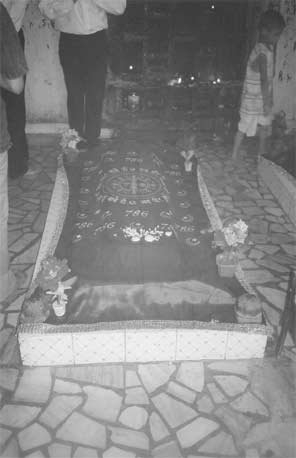
The holy shrine and it’s upkeep was then taken over by some Sikhs which was eventually handed over again to Muslims in the year 2005.
Significantly it is the only one qabr (tomb) of Imam Zadeh (son of the Holy Imam ) in India.
Guru Nanak and Imam Hussain
Guru Nanak had a very deep affection and honoured the sacrifice of Imam Hussain a. s.
He has shown his love by singing hymns and poetry in praise of the Holy Imam a. s.
Below is a famous quotation by Guru Nanak Dev ji .

Guruji on the supreme sacrifice of Imam Hussain a. s. and his small band of 72 followers.

In keeping true to the teachings of their Guru’s, Sikhs participate in the mourning rituals of Muharram, they are found distributing food, water to the people.

There are few Sikhs who also recite Nohas in memory of the Martyrs of Karbala , among the Shairs or poets who recited poetry in the love for Ahlulbayt comes ,Khushbeer Singh,‘Shaad ’,Puran Singh ‘Hunar’and many more……
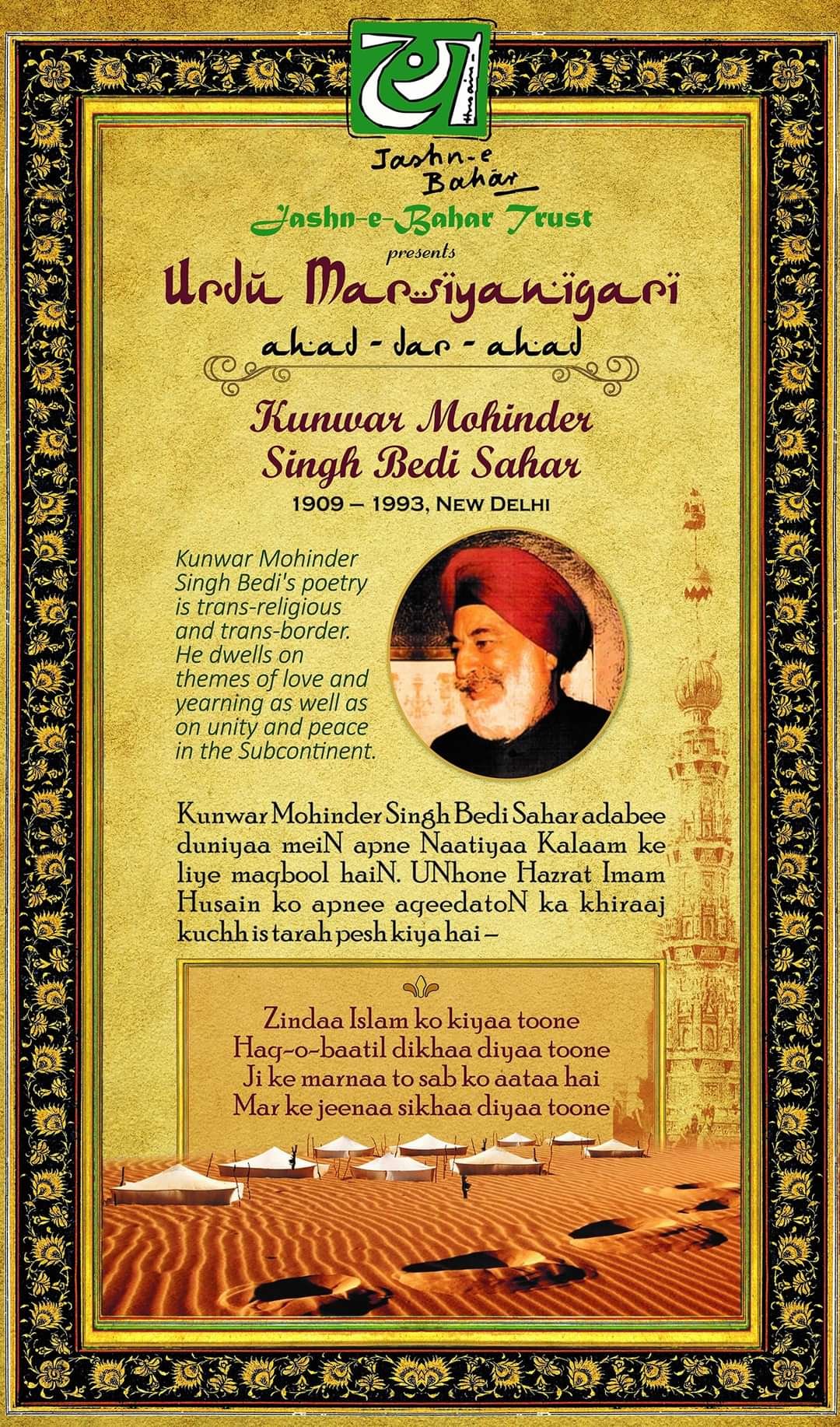
Kunwar Mohinder Singh Bedi, ‘Sahar’, he was also addressed as Aalijah as he was the direct descendant of Guru Nanak Devji.
Langars ( Communal Meals)
The word langar is a Persian word that translates as an ,‘almshouse ’,or a‘ place for the poor and needy’.
It was an institution among Sufi Muslims in South Asia whereby food and drink are given to the needy regardless of social or religious background.
Langars were a common feature of the Sufi centres in the 12th and 13th centuries. Even today some dargahs and shrines commemorating Sufi saints run large langars.
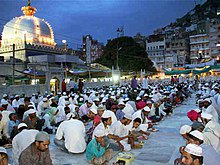
Baba Faridud -din Ganjshakar first introduced the institution of Langar in the Punjab region.
It was later adopted as an institution and term by the Sikhs.
It is a free communal kitchen attached to a Gurudwara in the Sikh tradition.
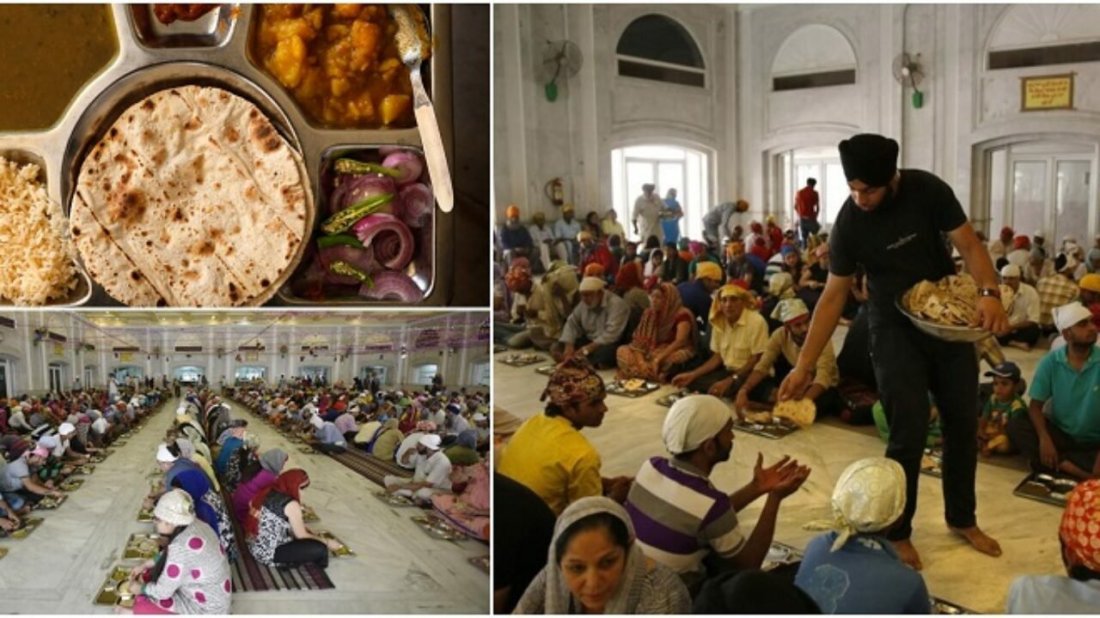
The concept of Langar teaches unity,equality, love, compassion and a sense of service (Sewa).
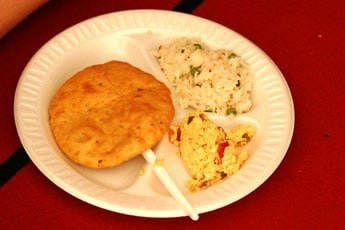
Simple hygienic vegetarian menu is followed all over the world, which includes dal (lintels), chawal ( rice) , one sabzi ( vegetables dish) and roti (bread).
Golden Temple in Amritsar has the World’s Largest Community kitchen run by Sevadars ( volunteers) doing selfless service.
Interestingly the langars outside the Gurudwara’ s of Jalandhar, Malerkotla and Amritsar are known as Hussaini langars and the Sabeel is known as Chabeel, although they both have been used to serve same purpose and that is to distribute water to the thirsty.
Honouring one another
Sword of Imam Ali
Gurudwara Shri Keshgarh Sahib is located at Anandpur Sahib, Punjab .
It is one of the 5 five highest Sikh Institutions or takhts (seats) of authority of Sikhs and is also known as the, “Takht Shri Keshgarh Sahib ”.
This Gurudwara is famous as a repository of rare holy relics including the Khanda ( double edged sword) used by Guru to prepare Amrit for his Panj Pyares and the Sword of Imam Ali.
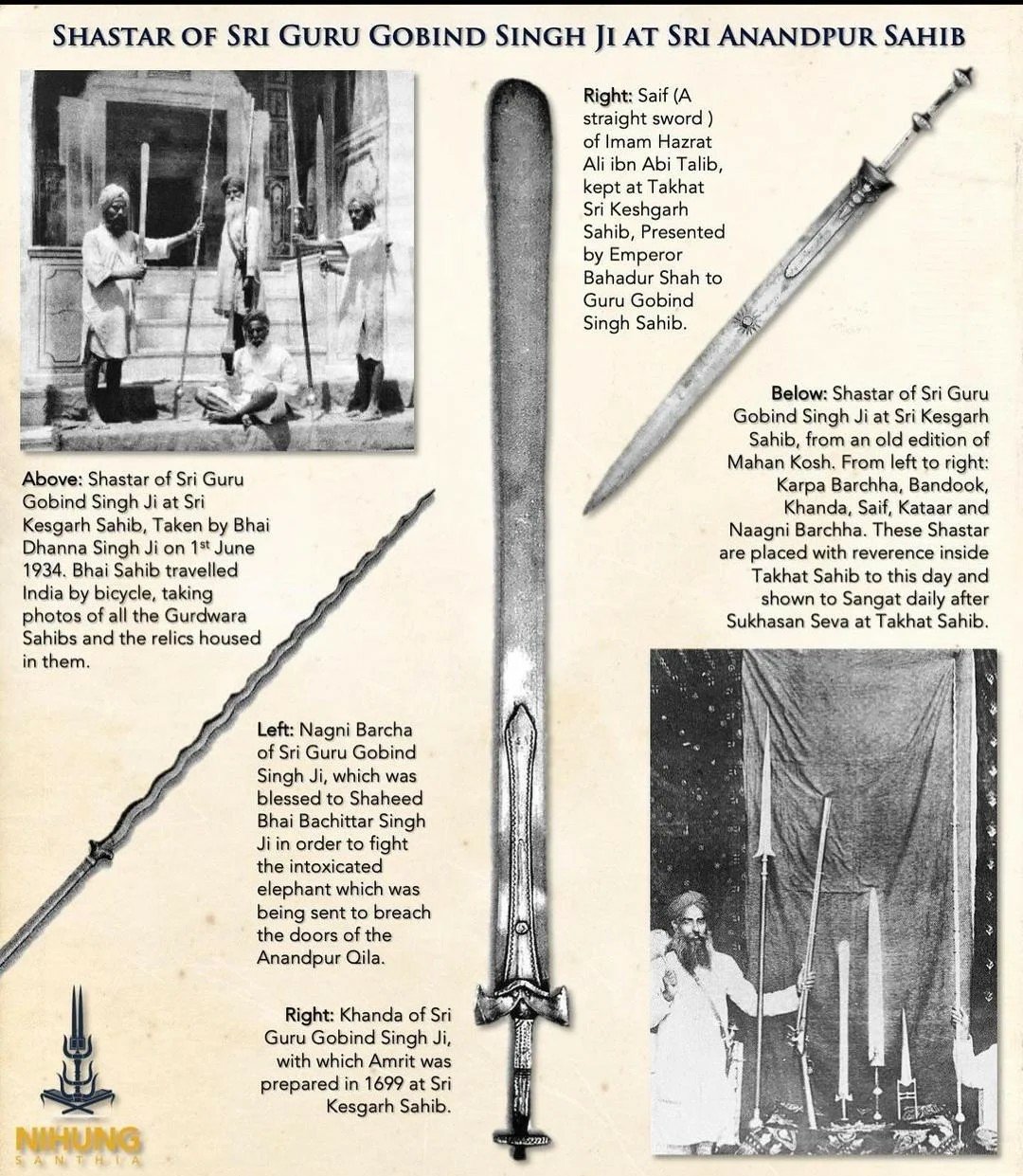
The sword of Imam Ali or,‘Saif ’, was reportedly presented to Guru Gobind Singh ji by the Mughal Emperor Bahadur Shah -1,who also bestowed him the title of Hind ka Pir ( Saint of India).
Sikh Shrines in Muslim names
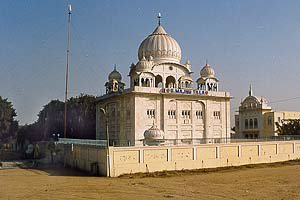
There have been many Sikh shrines in Muslim names like Gurudwara Yaadgaar ( memorial) Pir Buddhu Shah, Gurudwara Maulvi Patti Likhi( Nankana Sahib),Gurudwara Majnu ka Tila ( Delhi), Gurudwara Hajji Rattan ( Bhatinda)etc.

A University guest house of Punjab University ( Patiala) is named, ‘Waris Bhavan ’, in the name of Waris Ali Shah a Sufi saint and another guest house of Guru Nanak Dev University in Amritsar is Sheikh Sajjan Guest House.
Nawab of Malerkotla
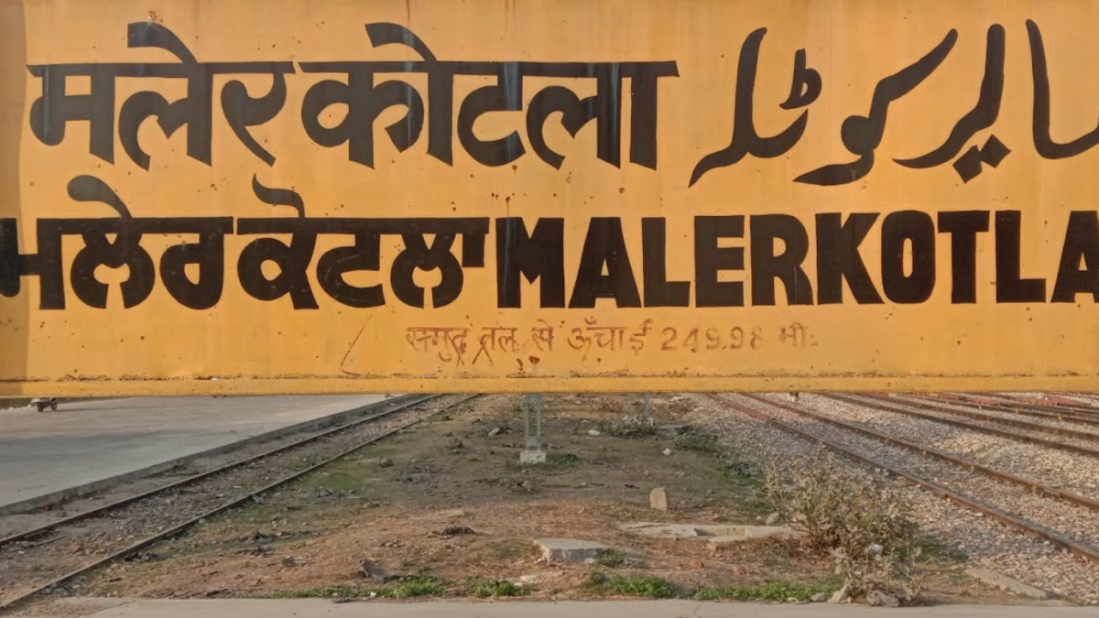
Malerkotla was a Muslim dominated principality of the Punjab region.
It’s Nawab Sher Muhammad Khan ( 1672-1712) protested against the capture and execution of two sons of Fateh Singh (6years ) and Zorawar Singh ( 9years) by the Mughal forces under Aurangzeb.
The story of protest reached Guru Govind Singh who after hearing this said,”His roots shall remain forever green.”
The Guru blessed the Nawab with a Hukamnama and a Kirpan, which still are among the prized possession of the Malerkotla house.
Guru ki Maseet
Guru ki Maseet also known as Guru’s Mosque is a historical mosque constructed by Guru Hargobind Sahib ( 6th Sikh Guru) in the year 1634 at the request of local Muslims of Hargobindpur in Gurdaspur district of Punjab ( India).
Situated on the banks of river Beas it is recognised as a historic site by UNESCO.
Dedication
I would like to express my sincere thanks to Mr. Parvez Zaidi who is currently Executive Vice -President Global Operations of P. T. C. Networks.
He shared with me the contact number of Professor Nashir Naqvi ,an authority on the History of Punjab almost 2 years ago when I had expressed my desire on writing upon this unique subject .
Professor Nashir Naqvi has helped me tremendously, answering my questions with great patience and throwing light upon the forgotten history of the Punjab region and particularly it’s colorful syncretic cultural fabric which has been passed down through centuries of living together between people of different religions and social strata.
This is what makes us proud to be Indian, living as part of a unique and diverse heritage.
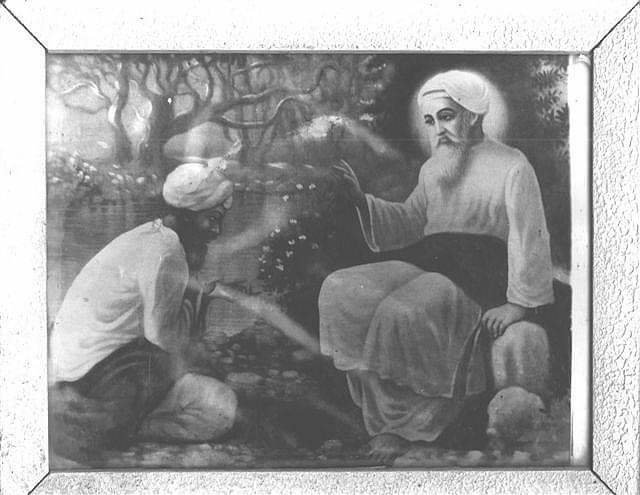
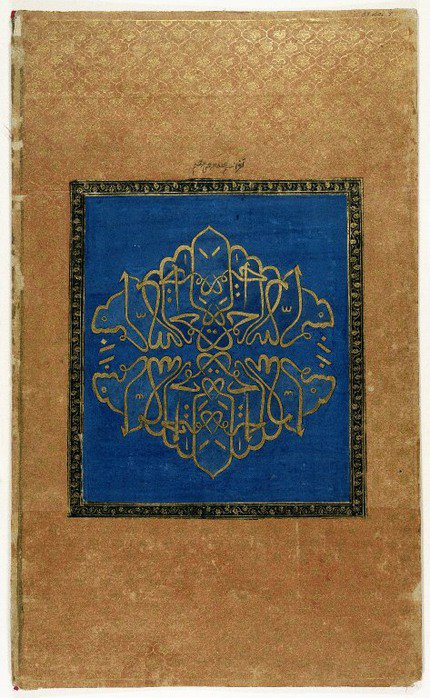

No comments:
Post a Comment